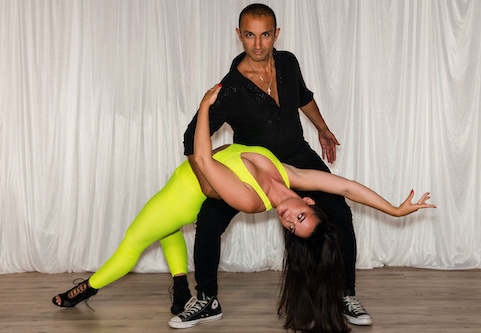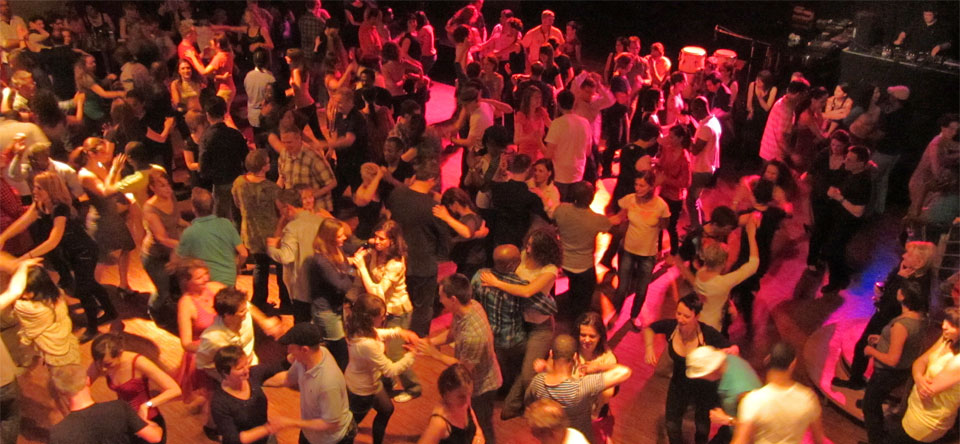10 Simple Techniques For Dance San Francisco
The Basic Principles Of Dance San Francisco
Table of ContentsThe Greatest Guide To Dance San FranciscoThe Of Dance San FranciscoSome Known Questions About Dance San Francisco.Rumored Buzz on Dance San Francisco
Allow's think of Salsa dance and music as a huge Tree that looks like this: Salsa is danced worldwide while lots of technical elements of the dance coincide across styles (6 steps over 8 beats danced on a quick-quick-slow or slow-quick-quick rhythm), there are a number of "characteristic" features of the main styles of Salsa that identify one from the various other.Couples taking part in a Casino site Rueda dance all relocations in unison as called by a Leader. Distinct features of Cuban design salsa are circular turn patterns (with "break back" steps on matters 1 and 5) in addition to body movement influenced by conventional Afro-Cuban folkloric dances. Distinct features of Cali design salsa fasts and complex maneuvering, danced with a solid hand hold link between partners.
The origins of the style are a topic of argument, yet it is claimed that New York style Salsa dance came from the 1960's due to the increase of Latin American emigrants after the Cuban Revolution (salsa dancing sf). Eddie Torres is one of the most popular New york city design dancer, being practically generally attributed with popularizing the style to dance centres beyond New york city
The standard rhythm of "On-2" is slow-quick-quick. The "youngest" of the styles of Salsa, L.A (https://www.openstreetmap.org/user/dancesf). Design (some people have actually called it "West Coast" style) came to be prominent in the 1990's and has its beginnings in ballroom (Mambo, Swing and Cha, Cha, Cha). Transform patterns lead and comply with strategies are heavily affected by these designs, with the Cross Body Lead being the foundation of the design
The 9-Minute Rule for Dance San Francisco
Design are implementation of turn patterns and numbers in the "slot", with the break steps on counts "1" and "5". While Salsa songs has strong origins in Cuban, Colombian and Puerto-Rican folkoric customs, it can not be discounted that all Afro-Latin and Latin American societies have contributed to modern Salsa songs as we understand it today.


About Dance San Francisco
identifying attributes of Salsa songs are: 4/4 time signature, Child Clave and Tumbao rhythms, Montuno Piano Unless you have a background in music, the above 3 features possibly mean nothing to you. An easier method to define Salsa songs is just how it does NOT seem like various other kinds of Latin American music.

It's time for lessons. With a lot of workshops around and various designs to select from, where does a full novice start? Most brand-new dancers pick to find out L.A. "On-1" style slotted Salsa styles are one of the most widespread in North America (with some exceptions of some metropolitan centres that still predominantly welcome Cuban and Puerto Rican designs) and best site L.A.
.A. Style will quickly educate you the fundamentals of Salsa timing, weight transfer and transform pattern execution. Several professional dancers, once they have actually had a year or 2 of dance L.A. Design Salsa under their belts, "button" to New york city style in order to expand their dancing vocabulary; however lots of dancers decide to stick to just one style of Salsa and enjoy their time on the dancing floor because certain style. salsa dancing sf.
Design and New York City Style all being danced in the same club, with a lot of the dancers being able to switch over from one design to the other from one song to the following. salsa dancing sf. Despite which style you choose it is very important to stay with that style till you're extremely comfy with the principles of timing, body rhythm and foundation move execution before taking into consideration "switching" styles (if you desire to)
Once you start lessons be all set to dedicate energy and time to finding out exactly how to dance in general it takes a full beginner (i. e., somebody with little or no dance experience) concerning 6 months of proactively taking lessons and heading out and practicing at the very least two times a week to get to a factor where pattern implementation starts to really feel "all-natural".